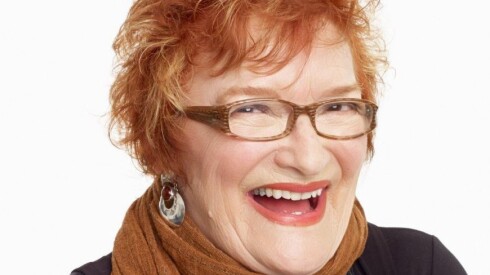Rosie Nolan began biking regularly when she moved to Chicago in 2021 because public transit was too inconvenient from her home in Ukrainian Village on the Near Northwest Side.
“It was just a little too out of the way from the Blue Line and buses,” she said. So she took up a friend’s recommendation to try the city’s Divvy bike-share program and hasn’t turned back since.
“It became my No. 1 mode of transportation,” said Nolan, 25. She’s among a growing number of new cyclists in Chicago.
Bicycling grew more in Chicago than in any other major American city in the last five years, according to an analysis sponsored by the Chicago Department of Transportation. But bike safety advocates say the city could be doing much more to protect cyclists and make biking even more attractive.
Biking is up 119% between fall 2019 and spring 2023, the study showed. That’s the largest jump in any of the country’s 10 largest cities.
Shorter, local trips
The study by data analysis company Replica also found that more people are turning to bikes for shorter, neighborhood-based trips. Neighborhood trips increased 113%, while cross-town trips across at least four neighborhoods increased 180%.
The study may prove politically useful to Mayor Brandon Johnson and his transportation department, which could use the study to justify the need for more bike lanes. The Chicago Department of Transportation said the growth in biking has been fueled by continued investments in bike lanes and greenways, which are low-stress residential streets that provide safe and comfortable connections for pedestrians and cyclists.
But bike safety advocates said the city could do a lot more to make biking more attractive.
“Imagine how many more people would be biking if it was safer,” said Christina Whitehouse, founder of the bicycle safety advocacy group Bike Lane Uprising.
Although Nolan took up biking along with thousands of others, she said she still worries about the safety of biking on streets with cars and trucks. She often used the Augusta Boulevard bike lane before it was beefed up last year.
“But honestly I never felt safe, even on streets with bike lanes,” Nolan said. “I think I’m just brave, to be honest.”
Studies have shown Chicago has fallen behind other major cities in improvements to bike infrastructure. But the city contends it’s improving streets for cyclists faster than ever before.
Last year, the city completed 50 miles of bike projects, including 27 miles of new and upgraded protected lanes and 18 miles of new neighborhood greenways, all annual records, according to transportation department spokeswoman Erica Schroeder.
“Providing comfortable bike infrastructure within neighborhoods is the best way to make biking a great option for more people, particularly those new to cycling,” Schroeder said in an email.
The company behind the analysis sponsored by the city transportation department used a variety of sources, including cellphone and credit card data and Divvy bike trip data, to compare a normal weekday of travel in 2019 and 2023, said Steven Turell, chief of staff at Replica.
First-of-its-kind survey
The study may be a first-of-its kind in its scope, covering not just commutes but all other kinds of trips that other surveys usually miss, said Jim Merrell, managing director of advocacy for Chicago-based Active Transportation Alliance.
“It affirms things that people like me have advocated for a while,” Merrell said. “But we’ve lacked local data. This helps us continue the city’s strategy to connect local neighborhoods and citywide networks.”
The study is also notable for documenting the growth in minority cyclists and households without a car, he said. Biking grew 166% among non-white cyclists and 207% among households without a car, the study found.
According to the data, 2.5 million people a day in Chicago make more than 8 million total trips — including by car and all modes of transportation, Turell said. About 2.5% of those trips were made on bicycle, meaning there are about 200,000 bike trips per day, he said.
The one-page summary of the study shows areas of the North and South sides saw the largest percentage increase in cycling.
Small changes, big rewards
The study shows that “small changes in the convenience and safety of people’s [travel] mode choices can make a big difference,” Turell said.
But there are probably many factors driving the rising popularity of biking, Whitehouse said.
“I think there’s a ton of factors that went into the increase,” she said. Part of it was the COVID-19 lockdown, which changed people’s transportation habits and led many people to biking. “A lot of people stuck with it,” she said.
People are also choosing cycling over using public transit, she said. Since the pandemic lockdown, train and bus service on the Chicago Transit Authority has been documented as less reliable, less frequent and less safe. CTA service levels still aren’t up to what they were before the pandemic.
Infrastructure designed for cars
Mallory Bradford was living in the Loop in 2020 when she sold her car and took up biking — a move she made because she was working from home and didn’t need to drive. After she moved to Lake View and her downtown office required her to come back, she continued biking because public transit was still unreliable.
“Biking cut my commute from over an hour, and inconsistent, to 25 minutes door to door,” said Bradford, 37. Biking has grown on her, and now she does it to run errands and make trips outside of commuting.
Biking also opened her eyes to how much of the city’s infrastructure is designed for cars, not cyclists or pedestrians.
“It’s gotten better with [new] bike lakes, but it’s still scary,” she said. “It seems like a no-brainer to build out the infrastructure.”








